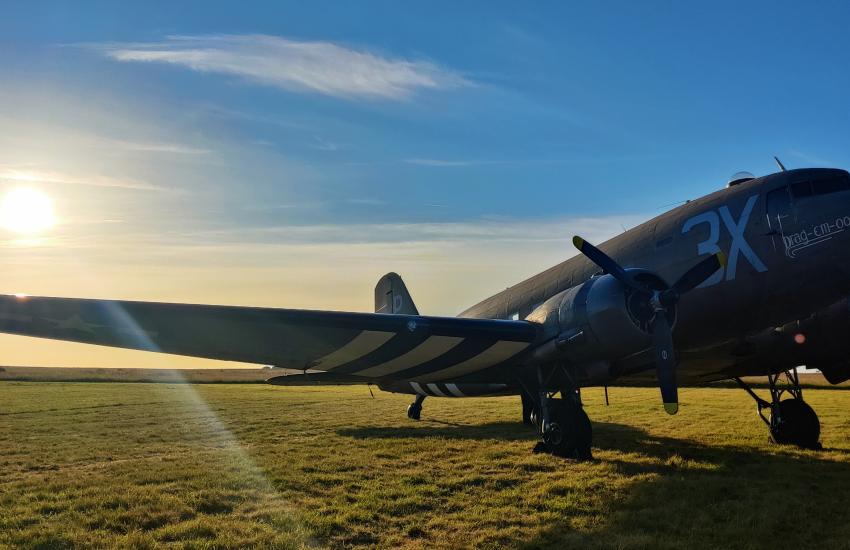Echoes of Valor: Honoring D-Day's Legacy 80 Years On
The paratroopers’ helmets couldn’t hide their concern. They tried to look cheerful, but weather reports weren’t auspicious. With changing winds, it wouldn’t be an easy jump.
“Thirty seconds!” blasted the jump master.
“Thirty seconds,” replied the men in unison.
All were ready to land on Normandy, with a large U.S. flag stitched to their shoulders, wearing the trademark red boots of airborne troops. They were flying in a bullet-strafed C-47 transport airplane, commissioned in December 1943, with "Drag-Em-Oot" emblazoned on her nose.
“Go!”
When young men left the airplane’s relative security in June 1944, bullets and shells lit up the night. This time, 80 years later, the only roar in the sky came from two aircraft engines; there was no enemy trying to stop the inevitable tide of history.
This was the closest anyone could be in 2024 to witnessing events long past but not forgotten.
“It’s an honor to pay my respects to my brothers,” said Ronald Scharfe, a WWII Navy veteran who fought in the Pacific. He wasn’t yet 18 when he first saw combat in Iwo Jima, he told SIGNAL Media. His wounds remain invisible, but eight decades later, they continue to bleed, he confessed.
Normandy brought all warfighters together: the old who fought against overwhelming odds and their successors.
“I’ve been looking forward to this jump since the 75th [anniversary], definitely excited,” said Tyler Neil, a current member of the 82nd Airborne Division. “We come out here to pay our respects to the men of the 82nd who made the ultimate sacrifice."
Neil spoke as a civilian, wearing a historic uniform and jumping with a team that reenacts D-Day, this reporter embedded with them.

Many teams like Neil’s were visible on roads and in towns, some driving Jeeps, others aboard Sherman tanks.
Time stopped when groups of WWII veterans appeared. They received applause, handshakes and thank-you's wherever they went. Some of them chose to visit their fallen comrades and pay their respects. Given military enlistment regulations in the 1940s and the time since, none of these veterans can be below the age of 96; most are over 100 years old.
Normandy was dressed in red, white and blue — the colors of the U.S., British and Canadian flags. For a few days, French flags were a minority. Towns and villages remembered with solemn festivities their deliverance from the long night of Nazism.
In this part of the world, Utah isn’t a state — it’s next to the village of Sainte-Mère-Église. Omaha isn’t in Nebraska.
While both beaches are formally in France, they will forever be places reclaimed by men who crossed the sea to bring freedom and end darkness in these lands.




Comments